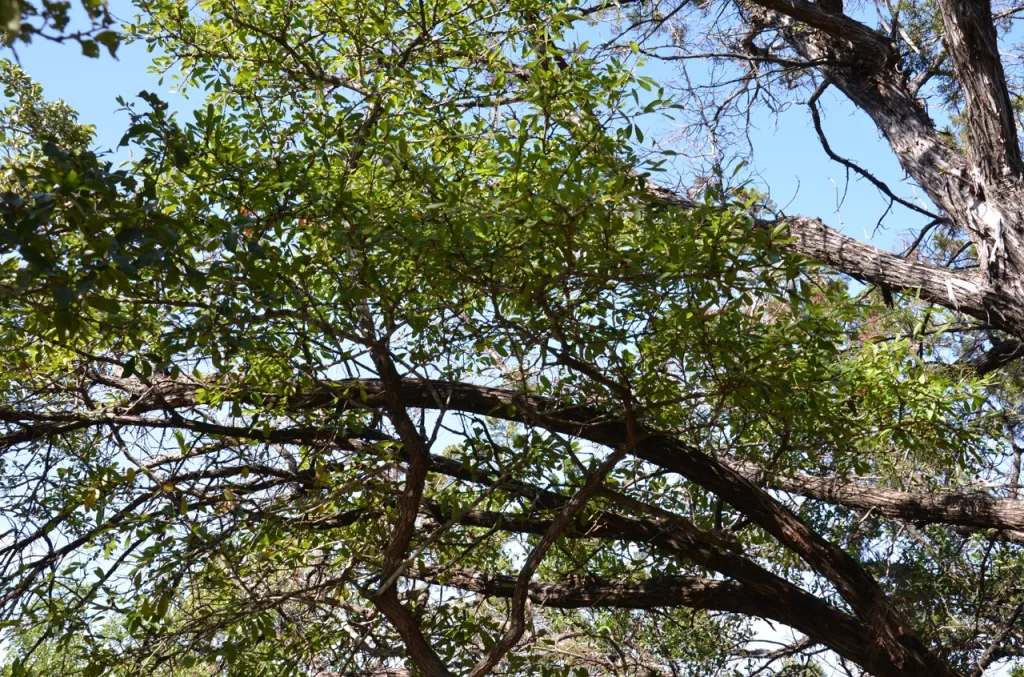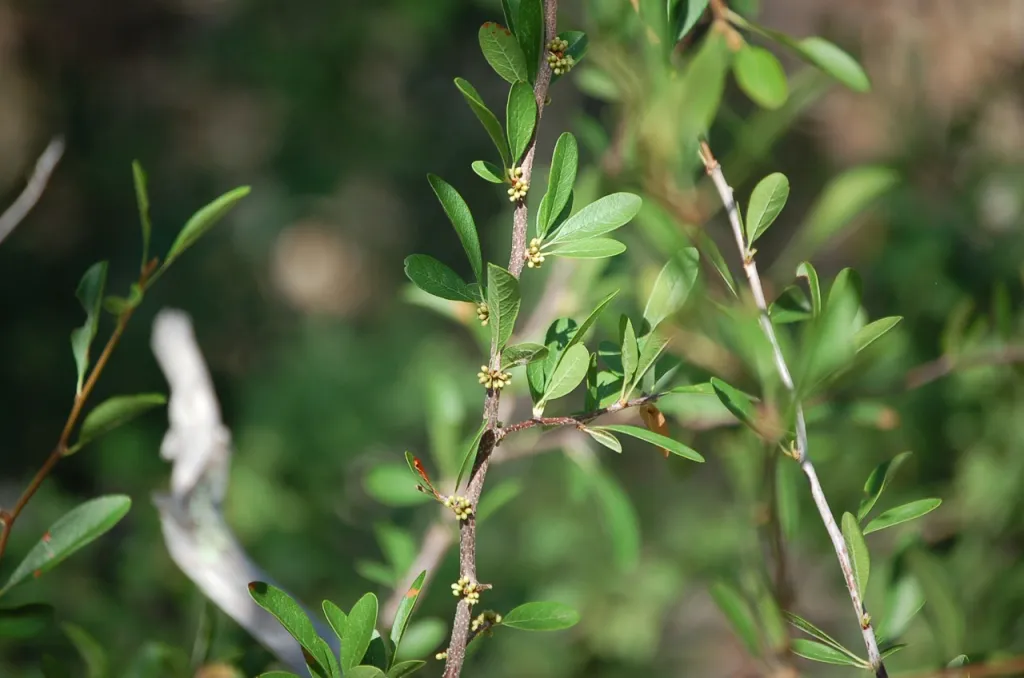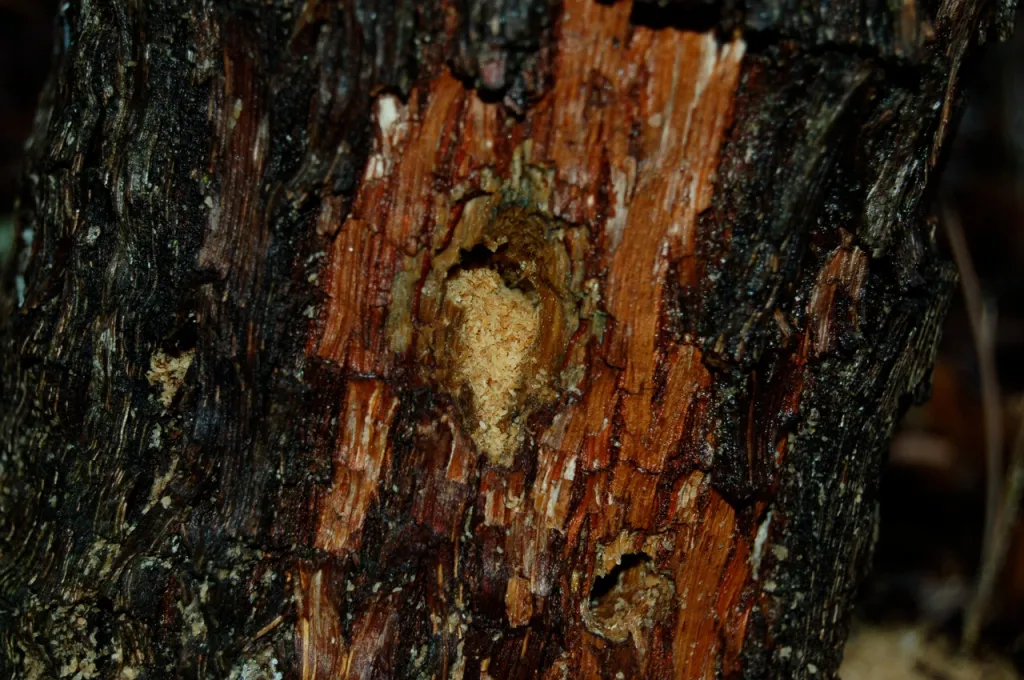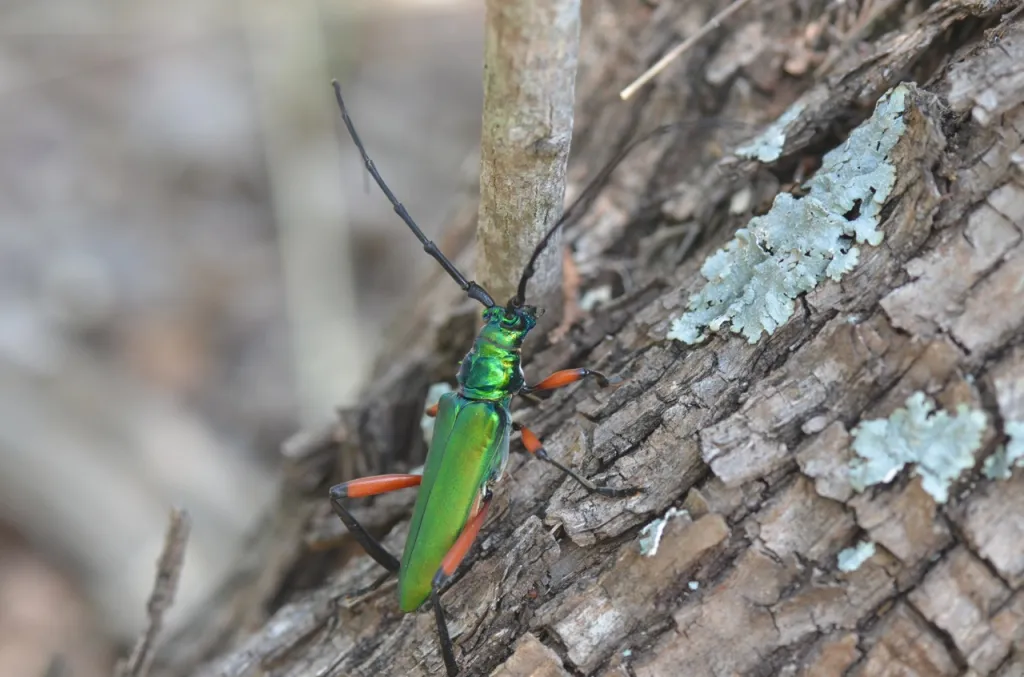By Delmar Cain
In her book, “Trees, Shrub, and Vines of the Texas Hill Country”, Jan Wrede describes one of our Hill Country natives as follows: “Usually encountered as a nondescript shrub or small tree with short, stout branchlets that sometimes have a thorn on the tip.” It is a perfect description of gum bumelia, gum bully or chittamwood (Sideroxylon lanuginosum), a tree that most of us have encountered if we have ever taken a walk in a nature area.

Although it really is a very attractive small tree worthy of keeping in your yard, it just does not seem to stand out in a crowd. It is the tree equivalent of “Mr. Cellophane”, the transparent character whose name could not be remembered in the musical “Chicago”. I have yet to go on a nature walk in the Hill Country without seeing several gum bumelia trees and without having someone ask the identity of at least one of them. Patty Leslie Pasztor who leads many butterfly and plant walks in our area has indicated that the most asked about tree on her walks is the gum bumelia.
Without knowing what it was, I saw my first gum bumelia when we were building a terrace on the back of our home. It was about 3 inches in diameter and 10 feet tall with a nice canopy. It just happened to be growing right in the middle of the area where we wanted the terrace to be. I wanted to save the attractive tree but thought it would be futile, since we would be covering the area with 3-4 feet of fill. If I had only known how tough it was I would have built around it.

The tree was cut and the terrace was finished. The gum bumelia has now sprouted at least two more trunks 5 feet away, which are about 6 feet tall. Mark Duff with the Texas Forest Service identified the tree for me and I have found them in several other locations.
Why is it that the tree is so forgettable? One of the reasons may be that the physical characteristics of the tree, although pleasing to the eye, are in no way attention-grabbing. The leaves are similar to a live oak and even to a mountain laurel. The leaves are alternate on the stem and may be single or in clusters of two or more. Each leaf is smooth on the top and hairy below. There may or not be thorns, and the ones that are present are not menacing.
The tree may sprout from the roots and can form thickets. But it can also grow to 12 inches in diameter and reach a height of 40 feet or more in good conditions. Its bark is brown but has a tinge of red in the fissures. It is semi evergreen and is drought tolerant over a wide range of soils.

The tree blooms in the early summer, but the white flowers are small and inconspicuous. The flowers have an odor, not memorable for most of us, which is attractive to butterflies and bees. The bees produce honey from the flowers. The fruit, which matures in the autumn, is a small oval black berry containing a single seed. It is edible even for humans and is consumed by birds and other wildlife.
Another reason that it may not be well known is the information about the tree or trees from our usual sources leads to a bit of confusion. For instance, the USDA Plants Database lists five different species of Sideroxylon lanuginosum, with each having the common name of gum bully and none have a common name of gum bumelia. Four of those species are native to Texas and three of the four are in our geographical area.
The Wildflower Center lists six common names for Sideroxylon lanuginosum, including gum bumelia, gum bully, woolybucket bumelia, chittamwood, gum elastic and coma. But the one species for which the Center has a specimen, Sideroxylon lanuginosum ssp. obolongifolium, collected in Bexar County, is the one species in Texas that the USDA Plants Database indicates has been found only in far North Texas. So apparently we have four species in the area with the name gum bully.

The Texas Forest Service in its index on the Trees of Texas lists Sideroxylon lanuginosum as “gum-elastic also know as bully, gum”. The Texas Parks &Wildlife Department lists the tree as gum bumelia (Bumelia lanuginose) with the scientific name being a synonym of the more recent Sideroxylon lanuginosum. The TAMU horticulture site Native Trees of Texas, honoring Bennie Simpson, lists even more common names for the same tree including wooly buckthorn, gum woolybucket, wooly bumelia, false buckthorn, ironwood and shittamwood. No wonder its identification is always in question.
But on none of these official plant sites did I find mention of one spectacular aspect of this nondescript tree. It is one of the host plants for what has been referred to by some as the “most beautiful longhorn beetle in North America”, the bumelia borer (Plithocoelium suaveolens). The beetle lays its eggs on the tree and the larvae bore into the roots of the tree. What emerges is a beautiful metallic green beetle with orange legs.
The moral of this story is threefold. (1) There is a good reason that scientists use scientific names instead of common names. (2) You will not be wrong if you refer to any one of the five species of Sideroxylon lanuginosum as gum bully. (3) Even a nondescript host can attract a beautiful guest on occasion.

